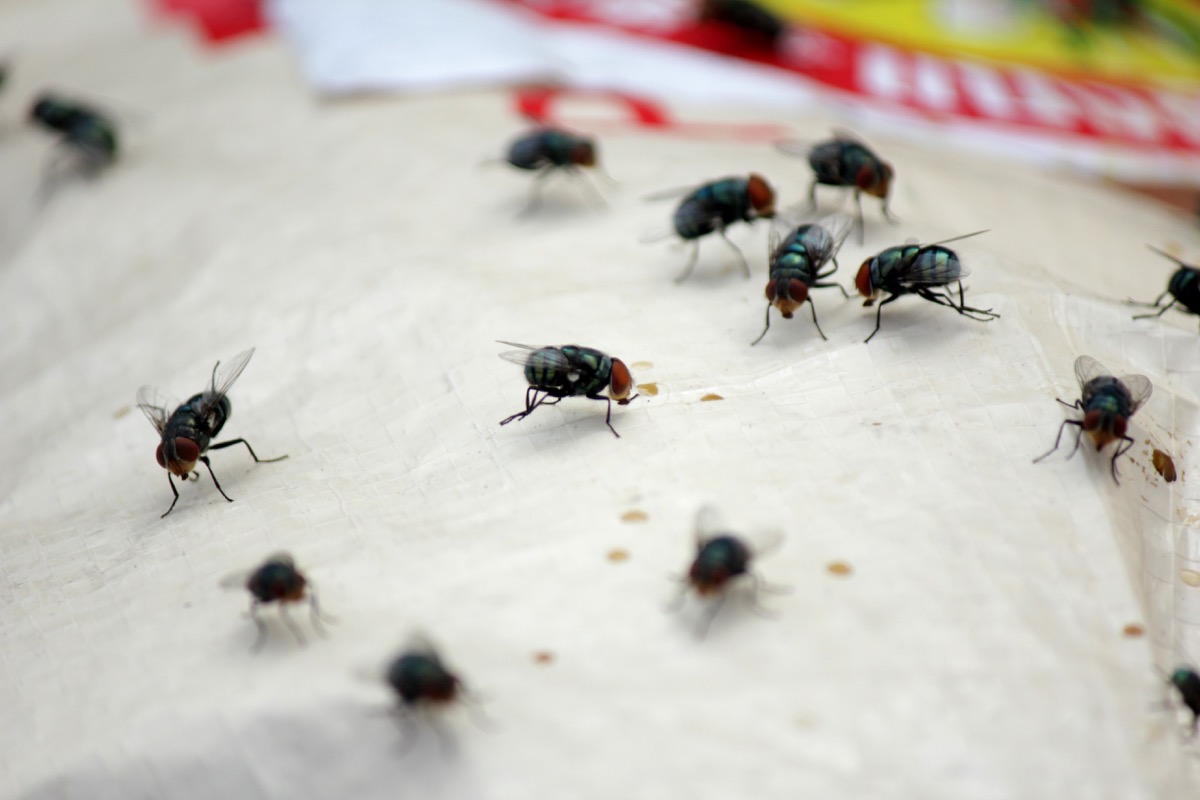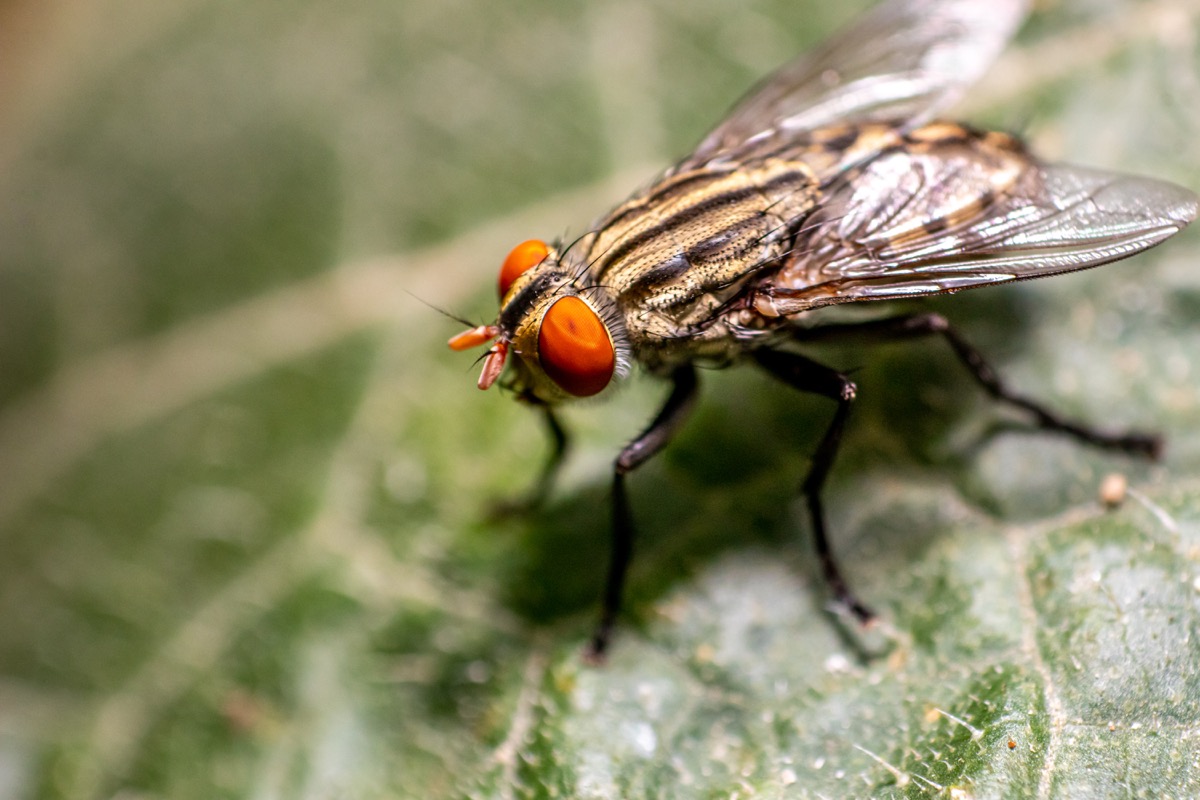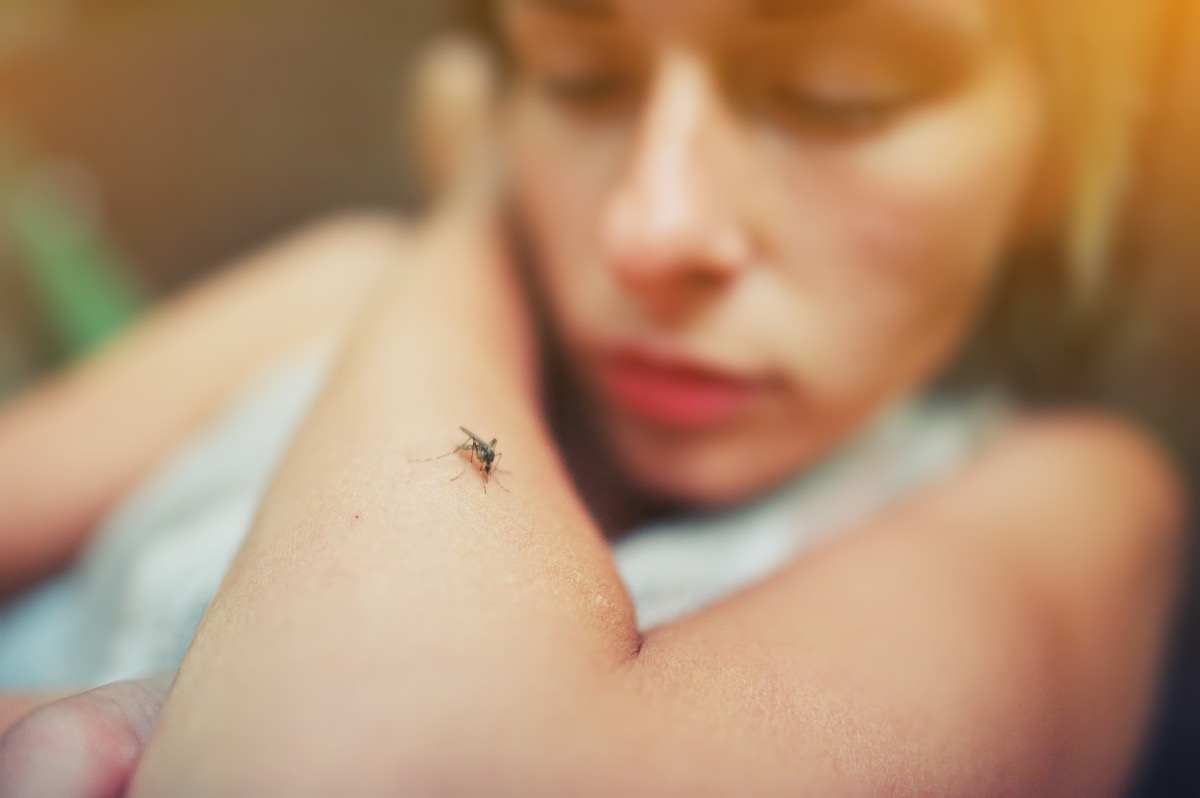The KSU study, which was published on Apr. 20, determined that house flies are able to carry and transmit COVID. To reach that conclusion, the scientists exposed house flies to COVID in a lab and then tested them for infectivity. Environmental samples were also tested for infectivity after contact with the COVID-exposed flies. Samples were collected at various times after exposure. According to the researchers, they found that “house flies acquired and harbored infectious SARS-CoV-2 for up to 24 [hours] post-exposure.” In addition, the house flies were able to transmit COVID to the surrounding environment up to 24 hours after being exposed to the virus. Environmental samples that were touched by the exposed flies were contaminated with viral RNA, though those samples did not contain an infectious virus. And for more critters to look out for, These Awful Bugs You Forgot About May Soon Come Back, Exterminators Warn. Because the research was conducted in a lab, the authors say further studies are warranted to determine if house fly transmission occurs naturally and the potential public health implications of such events. Juergen Richt, PhD, director of KSU’s Center on Emerging and Zoonotic Infectious Diseases (CEZID) and co-author of the study, told Verywell Health that he and his fellow researchers decided to test house fly transmission because “there are many cases of COVID-19 where we don’t know how someone contracted the virus.” Richt explained that house flies are “known to be attracted to biological fluids that can be contaminated with the virus,” but he said the likelihood of catching COVID from a house fly is rare. And for more up-to-date COVID news, sign up for our daily newsletter. According to the National Environmental Health Association (NEHA), house flies can transmit disease and bacteria to people. “The common housefly can transmit the pathogens that cause shigellosis, typhoid fever, E. coli, and cholera,” the NEHA explains. “The disease-causing agents can either be transmitted by the body hairs or by the tarsi which are transmitted to food or surfaces when the fly lands. Additionally, pathogens can be transmitted when a fly regurgitates onto food in order to liquefy material for digestion.“ae0fcc31ae342fd3a1346ebb1f342fcb And for another creepy creature to beware of, If You’re Going to the Beach, Watch Out for This Parasitic Bug. The good news is, another common set of bugs does not seem to be able to transmit the novel coronavirus to people. On Mar. 4, an article published in Journal of Medical Entomology suggested that mosquitoes and biting midges are unable to transmit COVID. “We think that these species are unable to be biological vectors of SARS-CoV-2,” Richt, who was also involved in that study, said in a statement. “The likelihood for transmission of SARS-CoV-2 by these insects is extremely low.” While direct transmission from these insects to humans may not be anything to worry about, “maybe mosquitoes and midges can be mechanical vectors” like flies, said Richt. “We believe that, in some of these cases, where you cannot find any direct transmission of the virus from interaction with positive people, that fomites in various ways could play a role.” And for more bug news, If You See This Bug in Your Home, Don’t Step on It, Experts Warn.



